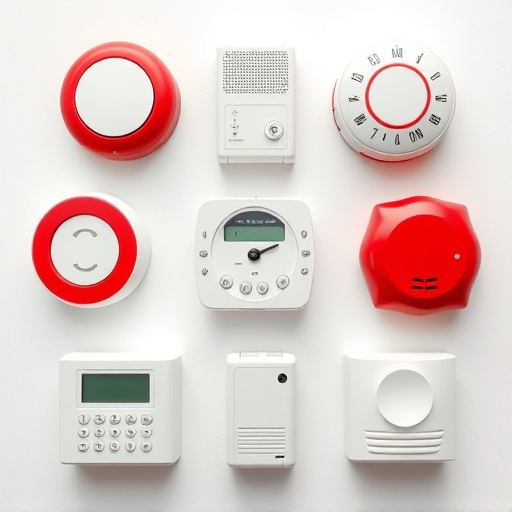Lone workers face significant risks that require robust safety alert systems. The key is balancing sensitivity and accuracy in personal alarms to prevent false alarms, which can desensitize users and reduce system effectiveness. Effective strategies include staff training, advanced sensor technology, customizable settings, and user-friendly interfaces. By considering personalized needs, implementing GPS tracking, providing regular training, and promoting responsible reporting, safety alert systems can maintain a low false alarm rate while ensuring immediate responses during genuine emergencies. Future advancements in wearable devices and AI-driven alert systems promise to further enhance lone worker safety by automatically recognizing distress or hazardous conditions based on real-time data and individual behaviors.
In today’s diverse work environment, many employees operate alone, posing unique safety challenges. This article explores crucial aspects of safety alert systems for lone workers, focusing on personal alarm devices and strategies to minimize false alarms. We delve into best practices for effective alerts and examine emerging trends in technology designed to enhance the safety of isolated professionals. Understanding the risks of lone work and implementing robust personal alarm systems significantly reduce the risk of unforeseen incidents.
- Understanding the Risks of Lone Work
- The Importance of Personal Alarm Systems
- How to Minimize False Alarms
- Best Practices for Effective Safety Alerts
- Future Trends in Lone Worker Safety Technology
Understanding the Risks of Lone Work
Lone workers, by definition, operate independently and without direct supervision. While this autonomy offers numerous benefits, it also exposes them to unique risks. These can range from unforeseen accidents, equipment malfunctions, or even violent encounters, which underscore the importance of having robust safety alert systems in place. A well-designed system must not only enable workers to signal distress effectively but also minimise false alarms to prevent unnecessary disruption and potential reputational damage for the organisation.
The balance between sensitivity and accuracy is crucial when it comes to personal alarm devices. High false alarm rates can lead to desensitisation among colleagues and response teams, undercutting the system’s effectiveness. Conversely, overly conservative settings might fail to capture genuine emergencies, leaving lone workers at heightened risk. Therefore, selecting and implementing a safety alert system requires careful consideration of industry-specific needs, environmental factors, and worker feedback to ensure it offers both reliable protection and minimal false alarm rates.
The Importance of Personal Alarm Systems
Personal alarm systems are a vital component of safety for lone workers, offering them a critical line of defense in case of emergencies. These portable devices enable individuals working alone to quickly and discreetly signal for help if they encounter dangerous situations, such as accidents, attacks, or medical emergencies. By leveraging advanced technology, personal alarms provide a means of communication that can dispatch emergency services swiftly, potentially saving lives.
The effectiveness of these systems is measured in part by their false alarm rate—the frequency at which alarms are triggered unintentionally. Low false alarm rates ensure that responders are not unduly burdened by unnecessary calls for help, allowing them to allocate resources more efficiently. Therefore, it’s essential to choose personal alarm systems with sophisticated sensors and user-friendly design, minimizing the risk of false triggers and ensuring reliable operation when it matters most.
How to Minimize False Alarms
Minimizing false alarms is a critical aspect of effective personal alarm systems for lone workers. To achieve this, several strategies can be employed. Firstly, ensure that all staff are adequately trained on how to properly activate and deactivate the alarm. Clear communication about the system’s functionalities and expected responses during emergencies can significantly reduce accidental triggers.
Secondly, advanced personal alarms often come with features like motion sensors and smart activation protocols. These technologies can help distinguish between genuine emergencies and everyday movements, thereby lowering the false alarm rate. By combining user education and sophisticated alarm design, lone workers can rely on their safety systems with greater confidence, knowing that true alerts will be handled swiftly and effectively.
Best Practices for Effective Safety Alerts
To ensure effective safety alert systems for lone workers, several best practices should be implemented. Firstly, consider the specific needs and risks associated with each worker’s role. Personal alarms equipped with GPS tracking can provide real-time location updates, crucial for immediate response in case of distress. Customizable alarm settings allow users to differentiate between genuine emergencies and false alarms, reducing unnecessary alert fatigue.
Additionally, integrating user-friendly interfaces and clear audio/visual signals in the design of personal alarms enhances their effectiveness. Regular training sessions on how to activate and interpret alerts are essential. Encouraging workers to report false alarms responsibly helps maintain a low false alarm rate, ensuring that genuine distress calls receive adequate attention.
Future Trends in Lone Worker Safety Technology
The future of lone worker safety technology looks promising with innovations aimed at enhancing both efficiency and reliability. One prominent trend is the integration of advanced wearable devices equipped with sophisticated sensors that can monitor vital signs, location, and environmental factors in real-time. These gadgets are designed to automatically trigger alerts if a worker experiences distress or enters hazardous conditions, reducing the risk of false alarms while ensuring swift response times.
Furthermore, artificial intelligence (AI) and machine learning algorithms are being leveraged to refine alert systems, minimizing the occurrence of false alarms by teaching them to recognize patterns and differentiate between genuine emergencies and routine activities. This technology promises to adapt to individual workers’ behaviors, improving overall safety without burdening them with constant vigilance.
Lone workers face unique challenges, making it imperative to employ effective safety alert systems. By understanding the risks and implementing best practices, organizations can significantly enhance their workers’ safety. Personal alarm systems play a pivotal role, but minimizing false alarms is crucial for ensuring genuine emergency responses. As technology advances, future trends in lone worker safety promise even more sophisticated solutions, aiming to reduce incidents and improve overall well-being, with a focus on lowering the false alarm rate.
